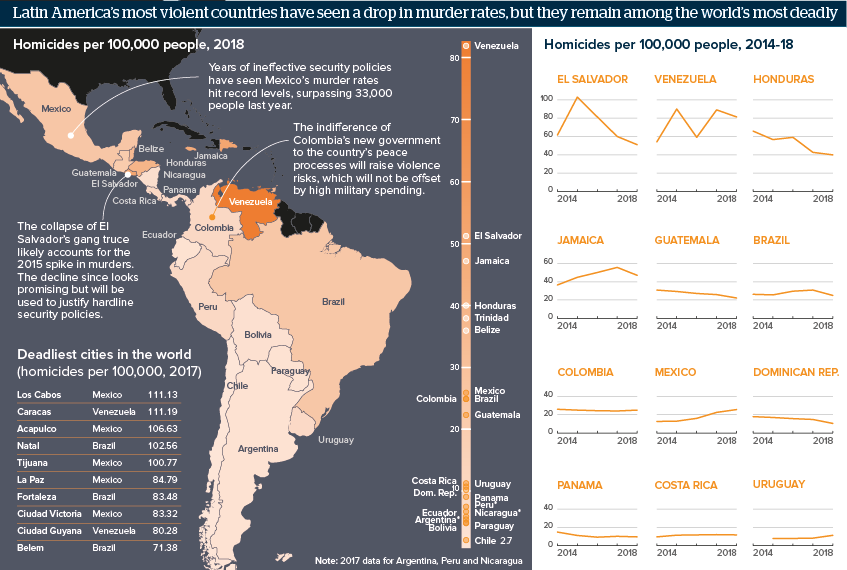Latin America violence to rise despite murder rate dip
Latin American murder rates are down but political upheaval and social tensions raise violence risks in 2019
Source: Sources: Insightcrime; Consejo Ciudadano para la Seguridad Publica y la Justicia Penal
Outlook
A slight decrease in murder rates across much of Latin America last year is positive but does not necessarily suggest a long-term trend. Most countries show broad consistency over the last five years and those with the largest improvements are starting from extreme levels.
Political violence in much of the region looks set to worsen in 2019. New hard-line governments in Brazil and Colombia have raised the prospect of significantly more state violence there, and in Venezuela, the threat of conflict is rising.
In Honduras and Guatemala, anti-government protests risk prompting a fierce backlash from the state. In Nicaragua, traditionally Central America’s least murderous state, such a backlash saw hundreds killed last year and shows no sign of abating.
Impacts
- National murder rates disguise local pockets of extreme violence; Mexico and Brazil have eight of the world’s ten most dangerous cities.
- Mexico’s record murder rates will put the effectiveness of the new government’s security strategy immediately to the test.
- Elections in El Salvador, Guatemala and Bolivia this year all bring a risk of increased political violence.
- With social tensions rising in many countries due to sudden spikes in migration, increasing xenophobia will put vulnerable incomers at risk.
See also
- Costa Rica land dispute resolution is no easy task - Mar 25, 2019
- Violence is key challenge for Central America in 2019 - Feb 19, 2019
- Plan shows government commitment to security in Mexico - Feb 7, 2019
- Outright win hands Bukele solid mandate in El Salvador - Feb 6, 2019
- Brazil security policy proposals will prompt fears - Nov 28, 2018
- More graphic analysis
